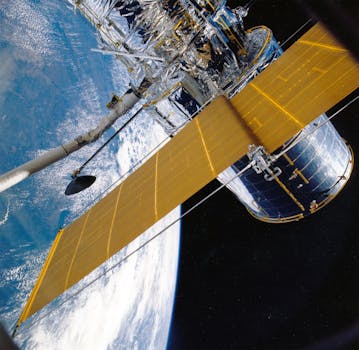LEO Satellites: The Future of Global Connectivity – LEO Satellites

LEO Satellites: The Future of Global Connectivity – LEO Satellites
LEO satellites are a type of satellite that orbits the Earth at an altitude of around 160 to 2,000 kilometers. They are designed to provide a range of services, including broadband internet, navigation, and Earth observation. One of the key benefits of LEO satellites is their ability to provide high-speed, low-latency connectivity, making them ideal for applications that require real-time communication.
The use of LEO satellites is becoming increasingly popular, with many companies, such as SpaceX and OneWeb, launching constellations of LEO satellites to provide global connectivity. These constellations are designed to provide seamless, high-speed connectivity to even the most remote areas of the world, bridging the digital divide and enabling global connectivity like never before.
How LEO Satellites Work

LEO satellites work by using a network of satellites that are in low Earth orbit. These satellites are equipped with transceivers that allow them to communicate with each other and with ground stations. The satellites use a range of frequencies, including Ka-band and Ku-band, to transmit and receive data.
The data is transmitted from the ground station to the satellite, which then relays it to other satellites in the constellation. This creates a network of interconnected satellites that can provide seamless, high-speed connectivity to any point on the globe. The use of LEO satellites also enables the provision of real-time communication, making them ideal for applications such as video conferencing and online gaming.
Benefits of LEO Satellites

There are many benefits to using LEO satellites, including their ability to provide high-speed, low-latency connectivity. This makes them ideal for applications that require real-time communication, such as video conferencing and online gaming. LEO satellites are also more cost-effective than traditional geostationary satellites, which makes them more accessible to a wider range of users.
Another benefit of LEO satellites is their ability to provide connectivity to remote areas. Many parts of the world lack access to traditional broadband infrastructure, making it difficult for people to access the internet. LEO satellites can provide connectivity to these areas, enabling people to access the internet and connect with the rest of the world.
Challenges Facing LEO Satellites

Despite the many benefits of LEO satellites, there are also several challenges facing their adoption. One of the main challenges is the issue of interference. With so many satellites in low Earth orbit, there is a risk of interference between them, which can disrupt communication and cause errors.
Another challenge facing LEO satellites is the issue of space debris. As more and more satellites are launched into low Earth orbit, there is a growing risk of collisions between them. This can create a significant amount of space debris, which can pose a hazard to other satellites and spacecraft.
Conclusion

LEO satellites are revolutionizing the way we communicate and access the internet. With their ability to provide high-speed, low-latency connectivity, LEO satellites are poised to bridge the digital divide and enable global connectivity like never before. While there are challenges facing their adoption, the benefits of LEO satellites make them an exciting and important development in the field of satellite technology.
See more:





